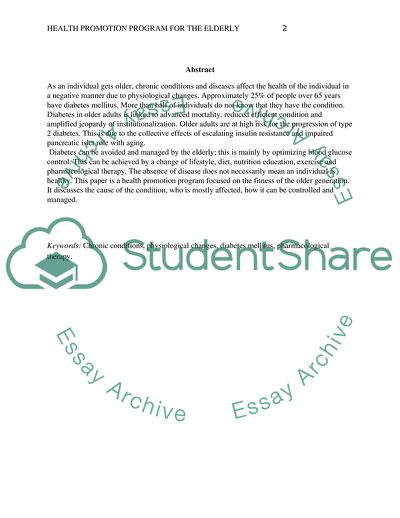Cite this document
(Health Promotion Program for the Elderly Research Paper Example | Topics and Well Written Essays - 2500 words - 1, n.d.)
Health Promotion Program for the Elderly Research Paper Example | Topics and Well Written Essays - 2500 words - 1. https://studentshare.org/health-sciences-medicine/1800711-health-promotion-program-for-the-elderly
Health Promotion Program for the Elderly Research Paper Example | Topics and Well Written Essays - 2500 words - 1. https://studentshare.org/health-sciences-medicine/1800711-health-promotion-program-for-the-elderly
(Health Promotion Program for the Elderly Research Paper Example | Topics and Well Written Essays - 2500 Words - 1)
Health Promotion Program for the Elderly Research Paper Example | Topics and Well Written Essays - 2500 Words - 1. https://studentshare.org/health-sciences-medicine/1800711-health-promotion-program-for-the-elderly.
Health Promotion Program for the Elderly Research Paper Example | Topics and Well Written Essays - 2500 Words - 1. https://studentshare.org/health-sciences-medicine/1800711-health-promotion-program-for-the-elderly.
“Health Promotion Program for the Elderly Research Paper Example | Topics and Well Written Essays - 2500 Words - 1”. https://studentshare.org/health-sciences-medicine/1800711-health-promotion-program-for-the-elderly.


